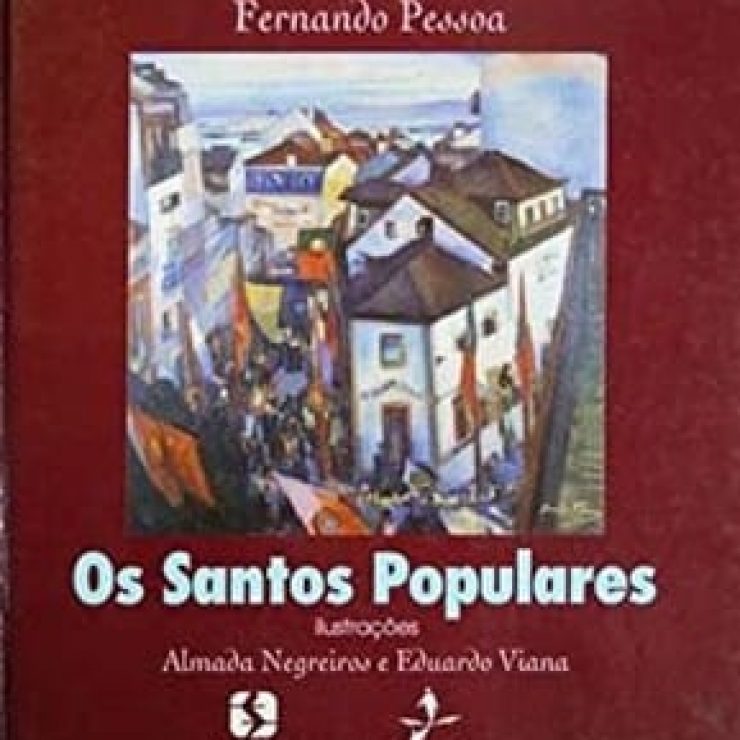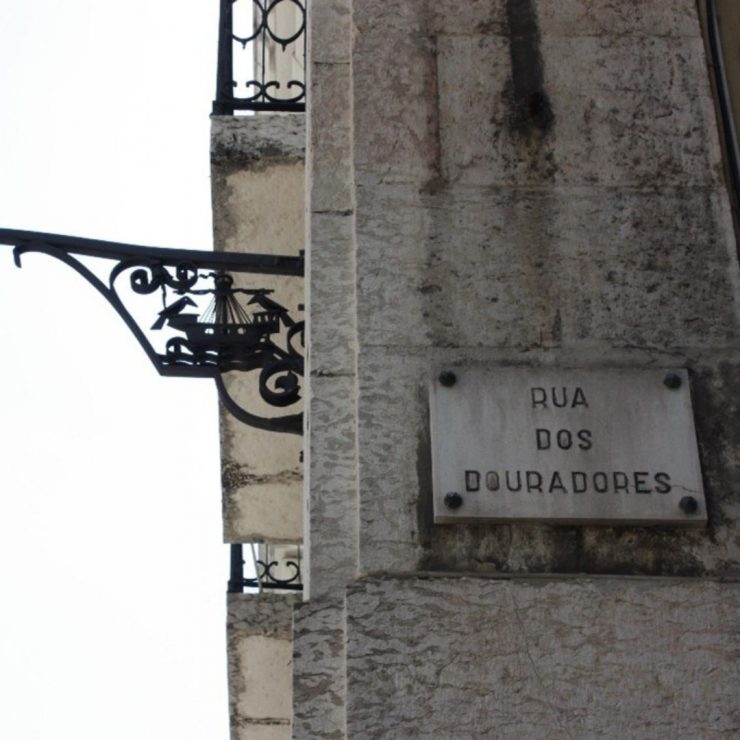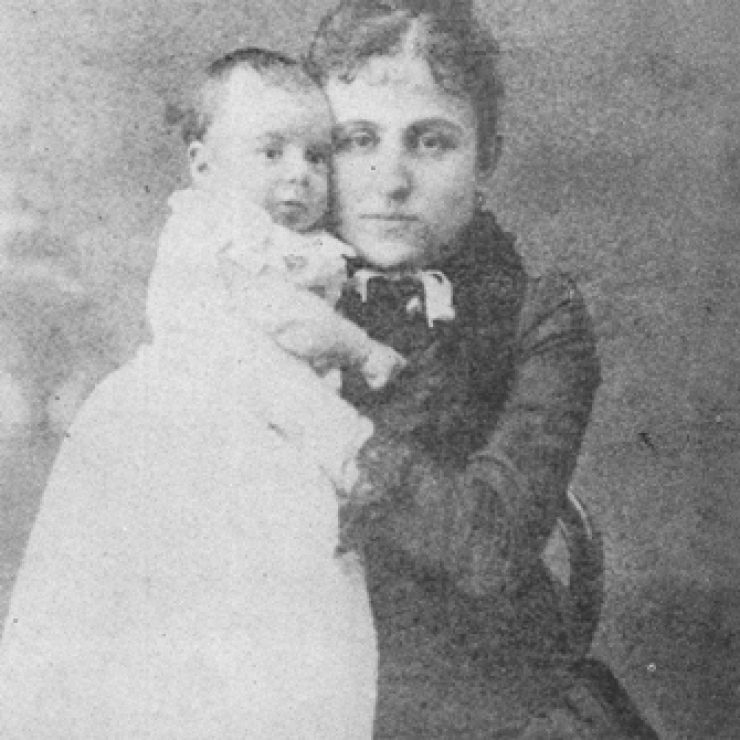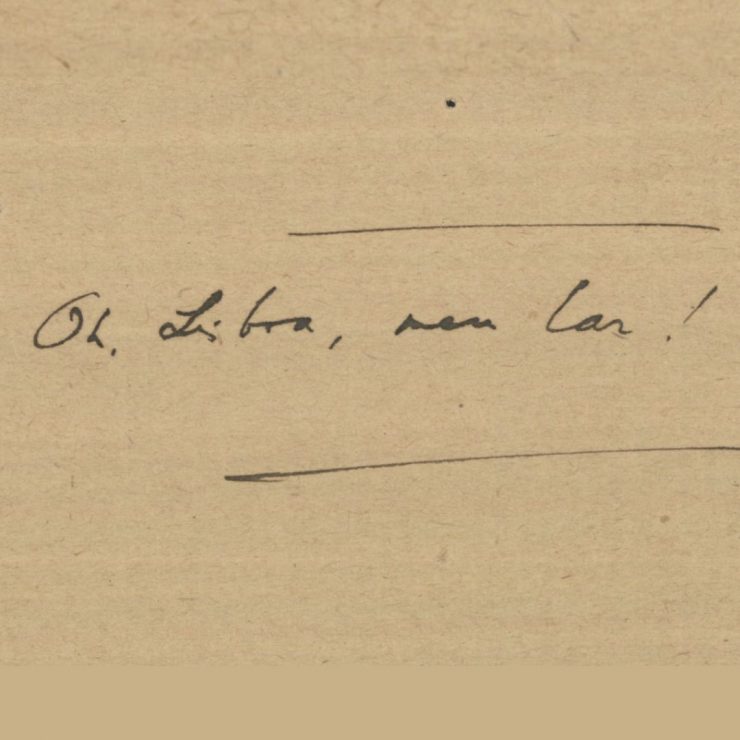The Lisboa Pessoa Hotel is located in the same address of the former “Tipografia do Comércio”, which in 1915 printed the two copies of Orpheu – Revista Trimestral de Literatura (Orpheu – Quarterly Literary Magazine), probably the most important periodic publication of the Portuguese contemporary culture. At Rua Oliveira ao Carmo, no. 10 (currently no. 8), in the centre of Lisbon, the cultural legacy of Pessoa and Orpheu remains alive and contemporary by means of a literary tourism project dedicated thereof.
Orpheu and the Modernism in Portugal
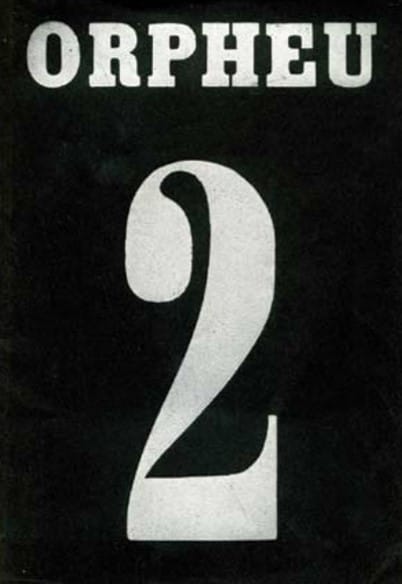
Led by the poets and friends Fernando Pessoa and Mário de Sá-Carneiro, Orpheu embodied an ambitious and highly innovative cultural movement in arts and in the Portuguese context of the early twentieth century. The so-called Orpheu Generation was in fact responsible for the emergence of Modernism in Portugal as well as the introduction and reinterpretation of international literary and artistic currents – such as Futurism – in both literature and plastic arts.
Besides Pessoa and Sá-Carneiro, some of the other names of this very important Generation are the artists Almada Negreiros, Santa-Rita Pintor and Amadeo de Souza-Cardoso, the composer Ruy Coelho and the writers Ângelo de Lima, Armando Côrtes-Rodrigues and Alfredo Pedro Guisado.
Orpheu’s birth location
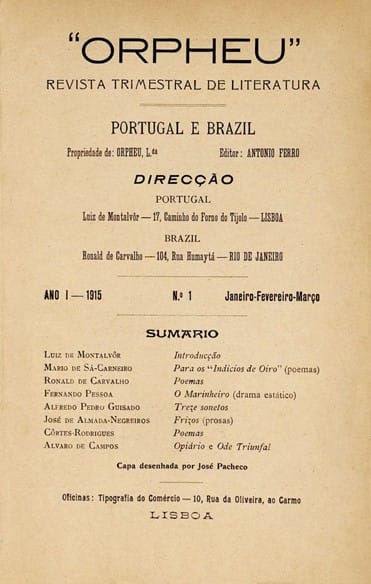
It is known that the two numbers of Orpheu were printed in the aforementioned “Tipografia do Comércio” previously located at no. 10 of Rua da Oliveira ao Carmo, while the magazine was headquartered at “Livraria Brasileira”, no. 190 of Rua Áurea (also known as Rua do Ouro). The director of the first issue, the writer and publisher Luís de Montalvor, lived at no. 17 of Caminho do Forno do Tijolo, a location named Rua Angelina Vidal since 1924.
The symbolic date that the astrologer Fernando Pessoa wrote as the one of Orpheu’s birth is March 26, 1915 when the first copies of number 1 of the magazine that had just left the “Tipografia do Comércio” were sold at 7 PM. Curiously, the Typography is located in the extension of Largo do Carmo where Pessoa himself had lived between 1910 and 1911 in an apartment located in no. 18-20. It should also be noted that Orpheu’s other leader – Mário de Sá-Carneiro – lived in this area, namely at no. 1 of Travessa do Carmo.
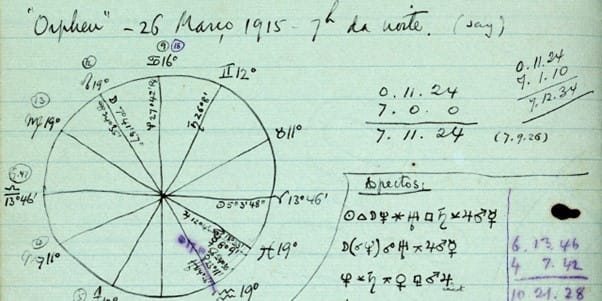
The Lisbon of Orpheu involves other addresses and sites such as the literary cafes where the sessions and tertulias (literary or artistic social gatherings) took place, debating the themes and authors to include in the magazine and where the controversies risen by Orpheu were discussed ironically – and they were countless given the rupture it represented in Portuguese literature at the time of its publication!
The Restaurant “Irmãos Unidos” in Rossio and the “Café Brasileira do Chiado” are places where Orpheu‘s memories remained embodied in the atmosphere. It was from “Brasileira” that Pessoa wrote in April 1915 to Côrtes-Rodrigues (a few days after publication of the first issue):
«We are the theme of the day in Lisbon»; I can say this to you with no exaggeration. The scandal is enormous. We are pointed out on the streets, and everyone – even not literary – talks about Orpheu.
There are major projects.
.
From the editorial and typographic point of view, Orpheu had a brief life because the funds to publish the magazine were over after the first two numbers. Thus, the already paginated number three had to wait until 1983 to be released. Nevertheless, the publications in 1915 were enough to revolutionize the contemporary Portuguese culture thanks to paradigmatic works of the Portuguese modernism such as «O Marinheiro» and «Chuva Oblíqua» by Fernando Pessoa, «Opiário» and «Ode Marítima» by his heteronym Álvaro de Campos, «Manucure» by Sá-Carneiro and the hors-texte by Santa-Rita Pintor.
Rua Oliveira ao Carmo: a literary address
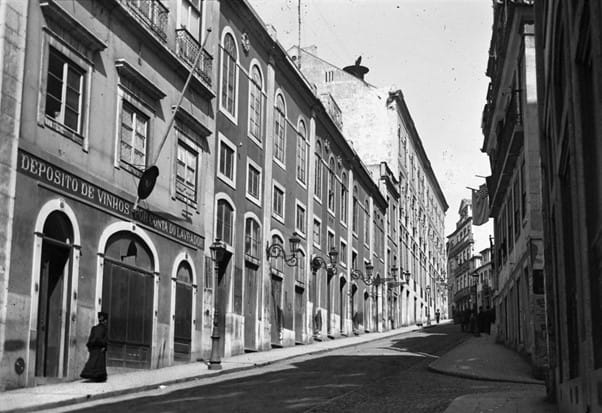
(Photo: “Arquivo Municipal de Lisboa” (Lisbon Municipal Archive), no author,
no date, available on the website Toponímia de Lisboa)
The Carmo area is currently characterized by the presence of the “Museu da Guarda Nacional Republicana” (National Republican Guard Museum), a building that was the site of important events in the Revolution of April 25, 1974, and the “Igreja do Carmo” (Carmo Church), one of the most visited monuments in Lisbon and comprising the homonymous medieval Convent founded by Nun’Alvares Pereira, the «Santo Condestável» (Holly Constable) to whom Pessoa dedicates a poem in the book “Mensagem” (1934). Rua Oliveira ao Carmo plays a role in this religious topography because it features a lateral part of the “Igreja da Ordem Terceira do Carmo”, which has the main façade in Largo do Carmo.
Curiously, this area and this street have a literary and cultural history somewhat linked to Orpheu, as already partially pointed out. In addition to the aforementioned, it should be noted that in Pessoa’s time the same Typography that printed Orpheu was also printingthe newspaper “A Causa”. More recently, no. 8 of Rua Oliveira ao Carmo was the headquarters of the newspaper “Diário Económico”, which also no longer exists.
Among other literary references we could underline, it is undoubtedly worth mentioning at least one more: the novel by José Saramago “O Ano da Morte de Ricardo Reis” (The Year of the Death of Ricardo Reis) (1984). A work that honours Fernando Pessoa by highlighting his heteronym Ricardo Reis in a critical representation of the first years of the «Estado Novo» (New State) in Lisbon. Here is how Pessoa’s ghost appears to his friend – the classicist poet and physician Ricardo Reis – on a carnival day at Rua de Oliveira ao Carmo where about twenty years before Orpheus came to light:
[Ricardo Reis] was going to continue his way up Chiado when suddenly he had the impression of seeing a peculiar dim figure […] he went closer to see more clearly and the man had the height, the physical complexion of Fernando Pessoa […]. The figure looked at him quickly and went away […], Ricardo Reis followed him, saw him go up the Calçada do Sacramento […]. He crossed Largo do Carmo and, almost running, went down the dark and deserted Rua de Oliveira, but Ricardo Reis was seeing him distinctly, neither near nor far, a walking skeleton, just like the one he used for learning in Medical School […].
Did Saramago want to pay homage to Orpheu in a veiled way? Was he aware of the important topographic and literary correspondence that connects Rua Oliveira ao Carmo to the life and work of Fernando Pessoa? In any case, the street and the aforementioned addresses are again literary places due to the presence of the Lisboa Pessoa Hotel in no. 8 (the former no. 10), a theme hotel dedicated to Fernando Pessoa that offers activities and touristic-literary and cultural programs linked to the Portuguese poet and Orpheu.
Felling everything in every way
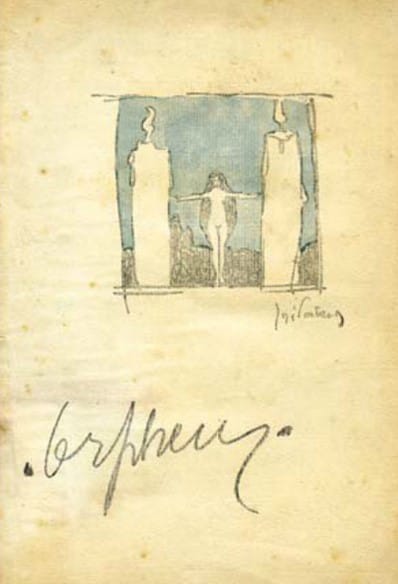
The «Sensacionismo» (Sensationism) was the name of the literary and cultural movement of the young people of Orpheu. This expression reflects the Orphic “creed” by which “Feeling everything in every way” is necessary, both in art and in life, as we can read in «Passagem das Horas» by the “sensationist” poet Álvaro de Campos:
Felling everything in every way,
Living everything from all directions,
Being the same in all possible ways at the same time,
Self-realizing all humanity at every moment
In a single diffuse, profuse, complete and distant moment.
The cultural proposal of the “sensationists” was an intersectional proposal in the sense that the goal was «an art that would be a synthesis of nations and of epochs and of arts», all converging to the «wonderful synthetic movement» that Orpheu wanted to be, thus manifesting another fundamental aspect of this Generation: the cosmopolitanism, being citizens of the world, making authentic Portuguese art which is deeply universalist at the same time (cf. “Sensacionismo e outros ismos”, pages 75, 220). Having in oneself «todos os sonhos do mundo» (all the dreams of the world) as years later Álvaro de Campos wrote in the poem «Tabacaria».
The Lisboa Pessoa Hotel intends to honour this message, this Generation and its leader Fernando Pessoa through an idea and a Literary Tourism project. It already has theme floors and rooms, a library inspired in Pessoa, a restaurant dedicated to the book Mensagem, literary roadmaps, cultural events, support for the publishing of Pessoa’s work, partnerships with important academic and cultural entities, and, obviously, this literary blog.
On June 21, 2019, on summer solstice day, the event entitled “Orpheu’s birth place” was the first moment in which the Lisboa Pessoa Hotel assumed the Orphic facet of its touristic-literary project. It was an afternoon of literature and art with a roundtable attended by the researchers Ricardo Marques and Marta Soares (both of the “Universidade Nova de Lisboa”). It was also the inauguration day of the exhibition by the painter Goulart entitled «Qualquer caminho leva a toda a parte» (Any road leads everywhere), honouring the first verse of a “sensationist” poem by Pessoa that was written one century before, in 1919.
Thus, with all mandatory humility when working with giants of culture and heritage – such as Pessoa and Orpheu – at Lisboa Pessoa Hotel we seek to contribute to the programmatic intent of its founders by materializing something Pessoa himself affirmed in 1935, the year of his physical departure:
Orpheu ended. Orpheu continues.
Fabrizio Boscaglia

